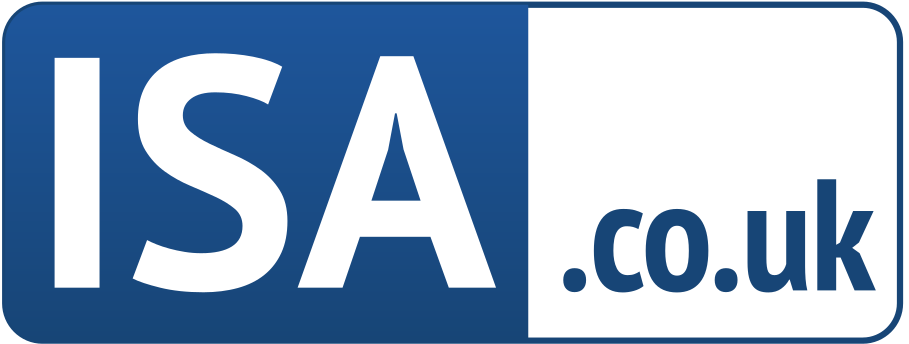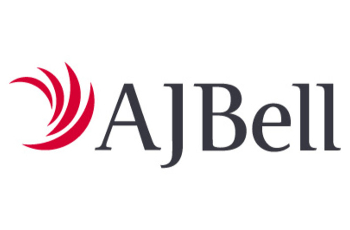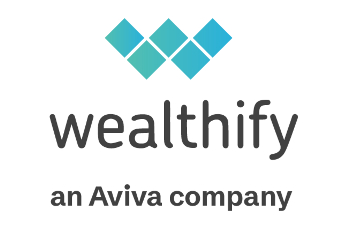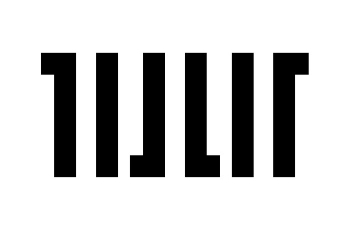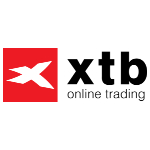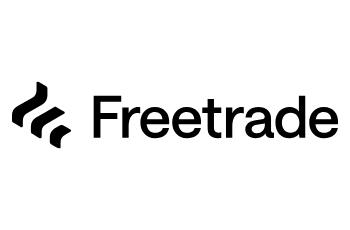Compare Investment ISAs
Find the best Investment ISA to make the most of your tax free allowance this year.
Investment ISAs put your capital at risk & you may get back less than you originally invested.
- Fund Choice: Invest in UK, US and international shares & funds
- Invest From: £25 pm
Good to know: An award-winning ISA that gives you complete control. The second largest platform in the UK with the widest choice of investment options in the market including funds, investment trusts, ETF’s and more. Open online in less than 10 minutes. Access to expert independent ideas and analysis. Low cost fees and trading. Capital at risk. *Get £100 of free trades when you open an ii Stocks & Shares ISA. Capital at risk. Terms & fees apply
- Fund Choice: Invest in UK, US and international shares & funds
- Invest From: £20 pm
Good to know: Invest from only £10 using your tax-free Investment ISA allowance. You can stop, restart, raise or lower your payments or your investments and cash in whenever you want. When you set up a My MoneyBuilder Select (ISA), your money will be invested in a single fund – the Unitised With-Profits fund. A mixed managed fund from Scottish Friendly where premiums are pooled with those of other clients and returns are linked to the performance of the underlying assets within the fund. Remember the value of investments can go down as well as up, and you could get back less than you’ve paid in. If you cash in before the end of 5 years there will be a £50 deduction from your cash-in value. Capital at risk.
Show More- Fund Choice: Invest in UK, US and international shares & funds
- Invest From: £25 pm
Good to know: This award-winning ISA has an extensive range of investment options, including thousands of funds and shares, plus a guidance service to help you find investment ideas. There is a low service fee (typically 0.35%), easy online application process and apps to manage your money on the move. Additional charges apply depending on your choice of investments. Plus, everything is backed by Fidelity’s 50 years of investment experience. Boring Money Best Buy ISA 2023
Show More- Fund Choice: Invest in UK, US and international shares & funds
- Invest From: £25 pm
Good to know: Invest in over 2,000 funds, shares and more across 25 markets. Invest from £25 per month. Which? Recommended Provider for Investment Platforms 2024. Low-cost online dealing from £1.50. Open your account in minutes from app or website, manage your portfolio on the move. FSCS protected. Capital at risk
- Fund Choice: Invest in Exchange Traded Funds (ETFs)
- Invest From: £100
Good to know: Make the most of the world’s best ETFs commission free. Build your own portfolio commission free or leave it to our experts for just 0.25%. Zero‑ISA fees. Choice of 700+ ETFs. Low cost, diversified, index-tracking of stock markets, bonds and commodities. DIY or Managed. ETF costs apply. Capital at Risk. *When you invest at least £100 with InvestEngine (Capital at risk, Ts&Cs apply). ** Customers who transfer an existing ISA, or open and fund a new account could earn a bonus of up to £4,000 on top of their partner welcome bonus! Ts&Cs apply
Show More- Fund Choice: Choose from almost 5500 stocks & funds
- Invest From: £1
Good to know: Choose from almost 5500 stocks & funds. Free ETFs; No Lightyear execution fees on ETFs and earn 3% on uninvested GBP cash. Move interest into high interest Vaults; Earn interest from high interest Vaults. Money is invested into BlackRock Money market funds, currently paying 4.61% AER on GBP (as 12th March 2025). There would be ongoing execution/FX charges based on pricing – FX fees may apply. Capital at Risk. The value of investments can go down as well as up so you may get back less than you invested. This information is not a personal recommendation for any particular investment. If you are unsure about the suitability of an investment you should speak to an authorised financial adviser. Tax treatment depends on individual circumstances and all tax rules may change in the future
Show More- Fund Choice: Invest in Shepherds Friendly With Profits Fund
- Invest From: £30 pm
Good to know: You don’t have to make any tricky investment decisions; your money will be invested in Shepherds With Profits Fund, and the bonuses you could receive will depend on the future performance of the fund. To try to achieve higher returns for you, your money is invested in a variety of assets, the majority of which consist of stocks and shares, but also property, bonds and cash. While returns are not guaranteed in stocks and shares investments and the value can go down as well as up, Shepherds apply a process known as ‘smoothing’ that attempts to even out fluctuations in the value and aims to keep a consistent level of bonus payments. Capital at risk.
Show More- Fund Choice: Invest in managed portfolios
- Invest From: £500
Good to know: Choose your level of risk from cautious to adventurous and have a plan expertly created and managed for you. Create multiple Plans – including Ethical Plans – with different risk levels. Invest as little or much as you like, add regular payments and top up whenever you like. Withdraw money or transfer out without notice or penalty fees. Wealthify app lets you check how your Plan is performing, manage your transactions and provide investment news and insights. There is a simple Annual Management fee currently no more than 0.6%. *Open only to new customers of Wealthify. The promotion is for a 12-month management fee free period for new JISA, ISA, GIA or SIPP customers (£50 minimum for SIPP). With investing your capital is at risk. T&Cs apply. Offer ends 30.06.2025. The tax treatment of your investment will depend on your individual circumstances and may change in the future. Wealthify is authorised and regulated by the Financial Conduct Authority
Show More- Fund Choice: Invest in UK, US and international shares & funds
- Invest From: £25 pm or £100 lump sum
Good to know: Hargreaves Lansdown are the UK’s no. 1 investment platform for private investors – kickstart your investing with their award-winning ISA. Choose your own investments with expert research and ideas to help you, or simply pick a ready-made portfolio. Manage via website, app or phone. Capital at risk. *HL will refund their annual account charge – no questions asked.
- Fund Choice: Over 12,500 investments, or a choice of five managed funds
- Invest From: No minimum
Good to know: Take charge of your investment decisions and invest from just £1 to build your investment portfolio from over 12,500 investments including ETFs, investment trusts, UK and international equities. 0.30% platform fee, capped at £50 per month, with £50 in trading credits twice a year. Alternatively choose an expertly managed portfolio by selecting from a range of five actively managed funds that most closely matches your investment objectives and risk appetite with an annual review to ensure to ensure your money is being managed in a suitable investment strategy. Advice is restricted to Charles Stanley Direct’s in-house funds and is subject to a minimum investment £20,000 Seamless integration with Charles Stanley Direct Cash Savings for competitive savings returns and instant transfers to investment accounts. Access to qualified financial coaches for investment guidance. Capital at risk. *The amount of cashback you could earn increases the more you transfer and applies to General Investment Accounts, Stocks & Shares ISAs, Junior ISAs and Self-Invested Personal Pensions. T&C’s apply
Show More- Fund Choice: Experts build your portfolio based on your risk profile
- Invest From: £1,500
Good to know: Answer questions about your goals, financial situation and attitude to risk, and Moneyfarm will recommend the right ISA portfolio for you, built and managed by experts to help your money grow. You’ll always be invested in a portfolio that’s suitable for you, and you can manage this through the Advice Centre. See what you’re invested in, how you’re performing and how much you’re paying anywhere and any time with the Moneyfarm app. Add money to your ISA by setting up a direct debit, investing a lump-sum, or by transferring old ISAs for free. Capital at risk.
Show More- Fund Choice: Choose from a range of 36 funds and ETFs and 20 US stocks. Select one of three simple starting options with a range of tracker funds or build your own investment portfolio by customising your investment options
- Invest From: £1
Good to know: Choose from a range of 36 funds and ETFs and 20 US stocks to invest with Moneybox. Earn 3.5% AER Variable on any uninvested cash you hold. There are additional fees charged directly by the fund provider. Please check the key investor information document (KIID) for a particular fund for more information. Keep things simple and get started with one of our three starting options: Cautious, Balanced or Adventurous – and customise your investments to align with your values. Open with as little as £1. When investing, your capital is at risk
Show MoreGood to know: Let Tillett filter the market for you. From well-known classics to trailblazers and wildcards. No one needs 5,000 funds. Get breadth and variety, without the choice paralysis
- Fund Choice: Choose from over 6900 instruments
- Invest From: £10
Good to know: Invest in real stocks with 0% commission (for monthly turnover up to 100,000 EUR (then comm. 0.2%, min. 10 EUR)). Over 6900 instruments including Stocks, ETF’s, Investment Plans, Forex, Commodities and Indices. Earn 4.5% interest on GBP uninvested funds. Applying for an account is quick and easy with a secure online form, and you could be trading within minutes. Multilingual customer support team is ready to help you – 24h hours a day from Monday to Friday. XTB is one of the largest stock exchange-listed FX brokers in the world with 1 million+ customers and over 20 years of activity in the financial markets. Capital at risk.
Show More- Fund Choice: Invest in UK, US and international shares & funds
- Invest From: No minimum
Good to know: Commission-free investing: No fees for buying or selling stocks (other charges may apply). Support: Fast and friendly customer support. A wide range of investments: 6,200+ US, UK, and European stocks, ETFs, and investment trusts. Low monthly fees: From £4.99/month. Capital at risk. Other charges may apply. *T&C’s apply
- Fund Choice: Choice of 2 Tracker Funds from L&G & Fidelity
- Invest From: £10
Good to know: App based stocks & shares ISA account. Choose to allocate your contributions between the two funds on offer in whatever proportion you choose: a shares fund (Fidelity Global Index fund) which aims to track the performance of global stock markets and therefore large companies such as Amazon, Facebook, Google and Johnson & Johnson, and a cash fund (Legal & General Cash Trust fund) which aims to provide returns in line with money market rates. Annual fee of 0.5% on the value of any investments. Two funds with their own management fees of between 0.12% and 0.15%. Change your allocation at any point. Option to opt into Round ups – collected from your bank by direct debit on a weekly basis and invested in line with your investment allocation
Show MoreWhat is an Investment ISA?
An Investment ISA is a savings account with added tax benefits, in which you can invest in stocks and shares.
Just like any other type of ISA, an Investment ISA is free from the following taxes:
- Capital Gains Tax
- Income Tax
- Dividends Tax
This means that if your investments grow over the long term, you will have peace of mind that you will not be taxed when you come to sell them.
You also won’t have to worry about declaring any dividends you receive on your tax return each year from these investments, as you would with a general savings account.
How are Investment ISAs different to Cash ISAs?
Unlike with a Cash ISA, in an Investment ISA, you can invest your money in the stock market to access greater growth and income potential for your savings.
An average performing Investment ISA can significantly outperform even the best rate Cash ISAs, as long as you are willing to accept the increased risk that accompanies them.
You can invest directly in shares of companies, or you can purchase investment funds that will invest in lots of different companies for you.
Top Five ISA Investments:
You can hold a wide range of investments within an Investment ISA, so we have compiled a list of the five most popular options to compare:
- OEICS (Open Ended Investment Companies)
OEICs also invest in a specific sector or market and are usually restricted to a specific country or continent. They are managed by a fund manager who will pick the underlying investments and take an ongoing free directly from the fund.
- Unit Trusts
Unit Trusts are funds that invest in a particular sector or geographical area. Investor money is pooled together and invested collectively by the fund manager who takes an ongoing fee.
- Investment Trusts
Investment Trusts also pool investors’ money together in order to invest in other companies that fit a certain investment strategy for a particular sector. They trade on a live stock exchange like a share as opposed to OEICs and Unit Trusts that are traded just once per day.
- Shares
Shares of any publicly listed individual company. These are considered as higher risk compared to funds because your investment is not diversified across multiple companies.
- ETFs (Exchange Traded Funds)
ETFs are also traded live on a stock exchange and usually track a particular index like the FTSE 100. As they simply track an index and are not managed by a fund manager; the ongoing fees are usually lower than Investment Trusts and funds.
What is a Managed ISA Portfolio?
There is a vast selection of investments available, and if you do not feel confident selecting your own, then a managed ISA portfolio may be the best Investment ISA for you. A professional portfolio manager will control this investment for you, but you will have to pay higher fees for the privilege.
They will spread your investment across numerous shares, funds, and other assets to ensure that it is diversified and has the right level of risk for you.
What are the different types of Investment ISAs?
Along with standard Investment ISAs, you can also open Investment Junior ISAs and Investment Lifetime ISAs. The best ISA to invest in will depend on your individual savings goals.
The following key account features are great to compare ISAs with:
Junior ISAs:
- Can be opened for children by their parent or legal guardian
- Children have an annual ISA allowance like adults, which is £9,000 for the current tax year
- The investment and tax rules are the same as standard ISAs
- No withdrawals are permitted until the child reaches the age of 18
Lifetime ISAs:
- HMRC adds a 25% bonus on top of all contributions
- Withdrawals must be for a house deposit or at age 60. Otherwise, the government bonus will be revoked
- Individuals have an allowance of £4,000 in the current tax year
- The same tax rules apply as standard ISAs
Can I withdraw money from an Investment ISA at any time?
With a standard Investment ISA, you can withdraw funds at any point. You will first need to sell any investments in your portfolio to realise sufficient cash for your withdrawal.
Depending on what investment you hold, it usually ranges from two to five working days for trades to complete and settle and for your withdrawal to go through.
The exceptions to this rule are for JISAs and LISAs, which are details above.
Will I lose my ISA allowance if I make a withdrawal?
You will not lose any of your annual ISA allowance if you make a withdrawal; however, you will not be able to reinvest your withdrawal in the same tax year without using a portion of your ISA allowance.
What are Flexible Investment ISAs?
A Flexi-ISA allows you to reinvest any withdrawals you’ve made in the same tax year without losing your allowance.
For example, if you withdraw £5,000 at the beginning of the tax year, you could reinvest that £5,000 later in the year along with your full £20,000 ISA allowance without breaching any rules.
You will need to check with your ISA provider as to whether your account is classed as a Flexi-ISA.
What is the best performing Investment ISA?
The best performing Investment ISA depends on the underlying investments that you purchase within your ISA.
Aside from the underlying investment choices, the most important way to compare Investment ISAs that will affect your portfolio’s overall performance is by looking at your ISA provider’s charges.
Your provider will charge an annual fee based on the value of your portfolio, and it often varies depending on what investments you hold and how much money you have invested.
The most important questions to ask are:
- What percentage does your provider take each year?
- Does this percentage vary depending on what investments you hold?
- Do they apply a tiered charging structure?
- Are there any additional regular administration charges?
Some providers apply a tiered structure to their fees, meaning that high-value portfolios will have access to lower rates over a certain threshold.
For example, one provider may have a high annual charge, but end up being cheaper for portfolio values in excess of £250,000 due to a tiered fee structure.
Additionally, some providers charge more to hold shares than they do for funds, and so depending on the makeup of your specific portfolio, certain providers may be cheaper for you despite being more expensive for other investors.
How many Investment ISAs can I have?
You can have as many Investment ISAs with different providers as you like; however, you cannot contribute to more than one in the same tax year.
You can contribute to both a Cash ISA and an Investment ISA in the same tax year, but not to two separate Investment ISAs.
If you have more than one Investment ISA and want to consolidate them then you can do this easily by completing a transfer form with the provider that you want to hold your consolidated ISAs with.
Transferring your ISAs does not use up your ISA allowance, and so you can consolidate as many ISAs as you would like without worrying about breaking the contribution rules.
Can I transfer a general investment account into an ISA?
If you already have investments in stocks and shares and you want to transfer them into an ISA investment account, then you can do so via a Bed and ISA. This is the process of selling and then repurchasing your investments within your ISA account.
A Bed and ISA is the process of transferring any shares or funds you hold in a General Investment Account (GIA) into an ISA wrapper and can usually be done online if you hold your investments with the same provider.
If they are held with another provider, then you will need to transfer your assets to a GIA with your ISA provider first before the Bed and ISA goes through.
How does a Bed and ISA work?
A Bed and ISA still counts as a contribution for your annual ISA allowance, and so you can only contribute up to £20,000 via a Bed and ISA in the current tax year.
You also cannot switch the investments directly into an ISA investment account, and a Bed and ISA is the process of selling and then repurchasing the assets within your ISA straight away.
This means that any capital gains held within these investments will be crystalised at the point of selling.
The maximum you can Bed and ISA in one tax year is £20,000 due to the annual ISA allowance, and so it is unlikely that you will crystalise any gains over your annual Capital Gains Tax allowance doing this (£12,300 for the 2025/26 tax year). However, if you have crystalised gains elsewhere in the year then you should speak to an accountant to check your tax liability.
Your ISA provider will try and complete the sale and repurchase of your investments as quickly as possible with a Bed & ISA so that you are out of the market for as little time as possible.
You will likely be charged for both the sale and the repurchase deals, and so it is worth getting familiar with these charges before taking action.
If you have a substantial unwrapped investment portfolio, then it will take several years to get it all transferred into an Investment ISA portfolio. However, once your investments are within the ISA wrapper you will have peace of mind knowing that you will never be taxed on them.
How do I pay money into an Investment ISA?
Contributing money into your Investment ISA is quick and easy, and most providers will accept the following methods:
- Online
- Mobile App
- Over the phone
- Cheque
- Direct Debit Instruction
Should I contribute a lump sum or via Direct Debit?
If you have the funds available, then you may wish to contribute your full allowance immediately to benefit from being invested in your stocks as soon as possible.
However, if you want to invest gradually over time, perhaps in line with your income, you can also invest via Direct Debit.
Investing in a stock gradually over time mitigates the risk of buying too much at volatile, high price fluctuations. However, it can also reduce the amount of time you spend invested in the stock and you could miss out on potential growth.
Which option you choose will depend on your circumstances and preferences, and neither is necessarily better than the other.
What do I need to set up an Investment ISA?
The only thing you need to set up an ISA is an internet connection to your telephone and your debit card to make your contribution.
For compliance purposes, your provider will need to verify your identity. In most cases, they can do this electronically based on your name, date of birth, and address.
However, sometimes, for example, if you have recently moved addresses, these searches can fail, and you need to prove your identity with verification documents.
If you need to do this, the documents you will need are usually two from the following list:
- UK Passport
- UK Full or Provisional Driver’s License
- A recent Utility Bill to your current address (dated within three months)
- A recent Bank Statement registered at your current address (dated within three months)
- Other forms of ID will be applicable depending on your provider’s requirements
Frequently Asked Questions
Can I transfer an NS&I ISA into an Investment ISA?
Yes, you can. You just need to ensure that you are not transferring out before any fixed interest terms are completed if you want to avoid potential exit charges or your earned interest being void.
Do I pay tax when withdrawing from an Investment ISA?
There is never any tax to pay or declare when withdrawing money from an ISA.
How long does it take to withdraw from an ISA?
Most ISA withdrawals will complete in approximately five working days, but they could take longer depending on the assets you need to sell.
Can I withdraw my dividends from my ISA?
Yes. Most providers allow you to have dividends automatically paid out to your bank account upon receipt. You can also have them reinvested automatically, too.
Can I pay my ISA fees from my non-ISA investments?
Most providers will allow you to nominate your General Investment Account (non-ISA) to pay your ISA fees so that you are not wasting your ISA allowance on charges that could be paid from non-wrapped funds.
Can my investments go down in an Investment ISA?
Yes, the value of your underlying investments will fluctuate, and you could lose money as well as gain.
How can I withdraw funds from my Investment ISA?
The easiest way to withdraw money from your Investment ISA will be online, via your mobile app, or over the telephone. Just remember that you need to sell enough holdings first to cover your withdrawal.
You can also request a withdrawal via postal instruction if this is more convenient for you.
